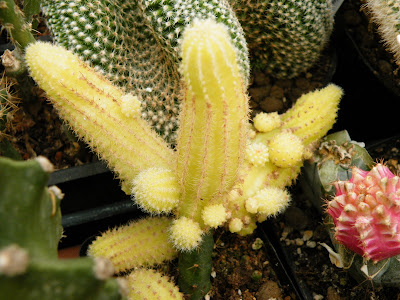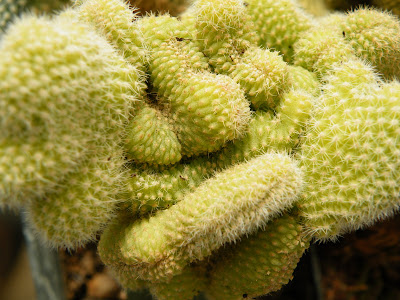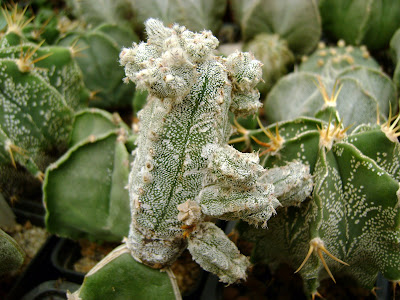
These Mammillaria have been pollinated artificially during the winter and spring and are now producing seed pods. Some have and can be expected to flower again.
This picture shows the fruits of Mammillaria haageana ssp. schmollii (bottom of first picture). Immediately above to the right is M. formosa and to its left is M. clavidiae. Just visible in the right hand corner is a form of M. haageana found at Colonia De

Los cruces, Puebla. On the left side is M. bocensis.
This picture shows the fleshy fruits of M. petrophila L. 052. This plant comes from Southern Baja California, Mexico.
Also visible in this picture are the dried fruits of M. elongata.

This plant comes by the tongue- twisting name of M. huitzilopochtli. There are several forms of which two can be seen in this picture. All forms of this species comes from the Tomellin Canyon of Oaxaca. The seeds were obtained from the plants discoverer, the late Dr. Alfred Lau.
Immediatly visible to the left is M. saxicola and M. sempervivi.
















































